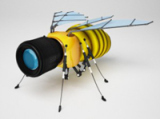Steven Lyle Jordan's Blog, page 60
March 28, 2013
Join me at my Sarcology Release Event, 4.1.13
 I hope you’ll join my Facebook Event as I pull the trigger on Sarcology, blog, tweet, post, yell out my window, and let as many of our friends as we can know about this new book! There will be Q&As, contests (with free stuff on the line!), reviews, discussions about the writing of Sarcology, and (God, please) lots of fun!
I hope you’ll join my Facebook Event as I pull the trigger on Sarcology, blog, tweet, post, yell out my window, and let as many of our friends as we can know about this new book! There will be Q&As, contests (with free stuff on the line!), reviews, discussions about the writing of Sarcology, and (God, please) lots of fun!
Sarcology explores the line between body and identity, in a smart and sexy detective adventure set in 2040s Atlanta. On sale 4.1.13 at my books site, Amazon and Barnes & Noble.
So stop by, click the Join button, tell your friends… and I’ll see you all on Monday!


March 24, 2013
Drones in the USA: Should we worry?
 The use of flying surveillance drones is beginning to move from the battlefield to our domestic shores. Not surprisingly, it is stirring up plenty of controversy.
The use of flying surveillance drones is beginning to move from the battlefield to our domestic shores. Not surprisingly, it is stirring up plenty of controversy.
Some of the concern reflects the present use of drones in battle areas. Equipped with sophisticated surveillance equipment and lethal munitions, military drones are sent on reconnaissance and surgical kill missions against military targets, leaders and terrorists. Which all sounds fine in a battle situation (even if they still result in some collateral damage); but what about in the USA? Some citizens are concerned that Americans in the US would be singled out as targets for military-grade drones to attack, and they question whether an American citizen determined to be a threat against other Americans should be surgically killed on American soil.
Okay… that’s not entirely true. The real concern American citizens have is that our government, not being infallible, will be told by some anonymous or insane source that one of us law-abiding citizens is a terrorist; and that the government, not questioning or investigating said information, will fire off a drone to take us out on our way to Burger King.
This is good old American paranoia at work, of course. It seems to be Americans’ favorite pastime to assume their moronic and ineffectual government is actually a brilliant, frighteningly efficient and ruthless government; that they are secretly watching our every move with hidden snipers, just waiting for the kill order when we shortchange the guy at the drug store. Every American is raised to believe he or she is someone special… and therefore worthy, even if secretly, of being watched by hidden evil forces. Our lives are made up of moments when someone may find out how special we’re not, sprinkled with moments when we believe that, if someone knew we were not paragons of virtue, we’d be taken out quickly and unilaterally. (Thank you, Cold War.)
At heart, we know the truth is somewhere in the middle: That our government is just made up of ordinary men and women, just like you, your relatives, or the couple next door; they don’t have access to Star Trek-quality sensors to watch every move of every American; nor do they have the virtually unlimited funds needed to seed our every block with snipers or monitor every computer and cash register for signs of fraud, hacking and kiddie porn. We also know that we’re not perfect, but that our imperfections aren’t usually enough to earn us more than an occasional speeding ticket.
Now this paranoia is being extended to local law enforcement agencies. Americans can now fear that their local police department will use drones to spy from the sky, catching speeders and jaywalkers with much greater efficiency than the police officers, radar guns and monitoring cameras could do on their own.
Okay, no… that’s not true either. Wait… actually, it is. Every American wants to be able to drive as fast as they want, cut across the street heedless of traffic markers, spit and throw litter on the sidewalk. Drones will make those things that much harder to get away with… drat! I can’t do things I know are illegal, because I’m more likely to get caught!
So, where does paranoia come in here? Well, again, we assume the police have unlimited funds and resources, so we’ll all have drones watching us at every moment in swarms, tossing down tickets at us every time we miss a trashcan with our sandwich wrapper. But drones are expensive to buy and maintain; they use fuel… and we all know fuel ain’t cheap. And you don’t think somebody is gonna notice when the drones are in the air for 400 hours… and contribute to about 14 hours of actual police work?
So, we can assume the police won’t be a real threat… except to chronic speeders. All I can say is: Get familiar with cruise control, Leadfoot.
So, what’s left? Only the real concern of all Americans: That drones will violate the sanctity and privacy of the American home. And they’re not even worried about the government or the police doing that. They’re worried about that weird guy who lives down the street. Citizens are afraid that their fellow Americans will buy drones, outfit them with sophisticated cameras, and go swooping up to our bedroom and bathroom windows, catching us in (or out of) our unmentionables, doing all kinds of kinky things that we don’t want the neighbors to know about.
Fortunately, American law still values the privacy of the home; and we can sleep soundly knowing that American law will be rewritten to include violation of our privacy by drones… especially non-government or non-law-enforcement drones. (Why? Because those government and law enforcement people don’t want the neighbors spying on them.) In other words, your government may be allowed to look at your house—though we all know they’re not very likely to—but your neighbor will be forbidden to spy on you for any reason. Chances are, drones owned by private individuals will be allowed to carry cameras; but those cameras will not be permitted to be able to see through the sheerest curtains, or carry infra-red or other special lenses that allow seeing through solid objects.
Those drones will also have to be registered with the FAA, since they constitute an airborne hazard. And if citizens (or the government) are concerned enough about where Mr. Jones sends his drone, the FAA will require active location technology on every drone—possibly even filing of flight plans—and that location data may be made available to citizens to monitor their own airspaces. Fines for violations of airspace or flight without a flight plan can be severe… ask any private or commercial pilot. Drones will likely be regulated just as tightly, if not more, making it more than a bit of a pain for the average guy to own a drone at all, much less to use it for anything other than specified tasks (like monitoring property, patrolling boundaries, checking crop fields, etc).
 And looking to the future… do we have anything to fear from the next generation of drones, the bird- or even insect-sized devices that are under R&D right now? Should we fear tiny devices that can literally stick to our windows and peer inside? Again, the law will certainly forbid it… but will that be enough?
And looking to the future… do we have anything to fear from the next generation of drones, the bird- or even insect-sized devices that are under R&D right now? Should we fear tiny devices that can literally stick to our windows and peer inside? Again, the law will certainly forbid it… but will that be enough?
At that point, American citizens may be looking into appropriate countermeasures for devices too small to be easily tracked by the authorities. Special films that can cover a window and make it a one-way glass, impervious to outside cameras, are a distinct possibility. And maybe some sort of “drone-zapper” technology will turn up at the local hardware store, something that will detect tiny drones within a specified radius and take them out with tiny projectiles or electric bolts. I’m sure we can depend on American inventors to provide us with those counter-surveillance tools. In fact, I’m sure the American government will develop those tools first, to protect us from foreign drones, and private inventors won’t be far behind.
So, do we have anything to fear from drones on US shores? Well, to the paranoid, I can only say: Keep being afraid, there’s nothing I could say to persuade you. But to everyone else, I say: Relax and close your blinds. You’re good.


March 22, 2013
Excerpt from Verdant Skies
 In case anyone forgot that I have other books available, one of which has been critically acclaimed, voted 2010 Top Four Reads at dailycheapreads.com and Best of the Best semi-finalist at EditorJennifer.com… I present to you an excerpt from Verdant Skies.
In case anyone forgot that I have other books available, one of which has been critically acclaimed, voted 2010 Top Four Reads at dailycheapreads.com and Best of the Best semi-finalist at EditorJennifer.com… I present to you an excerpt from Verdant Skies.
“They’re issuing a mayday!” Reya snapped, her hand pressing an earpiece in place, her other hand flying over the com board to isolate the signals. Julian and the rest of CnC watched on workstation screens, or on the main station’s column, tuned into a telescope that was trained on Tranquil.
“Engines must be venting freely!” a technician cried out. “Looks like their entire regulation system is blown away! It won’t stop as long as they’ve got fuel in there—”
“Track!” Julian ordered.
At another workstation, a young girl worked over her board. “Spiral course, motion on all axes,” she reported, biting her lip as she tried to make sense of her readings. “I’d say an… eighty, ninety percent chance of collision with Tranquil!”
At that moment, the GLIS began speaking: “Freighter collision with Tranquil imminent. Freighter collision with Tranquil imminent…”
Julian grabbed a com mike from the main station and keyed an override signal that would broadcast on all circuits. “Intercept that freighter! Do not let it impact Tranquil! Repeat, intercept that freighter, by any means—”
His voice broke off, when they saw the flash. For a split-second, it was possible to make out the freighter, twisting in a new and violent direction as it impacted the north face of Tranquil. Then there was a second flash and a spherical blast-wave that popped around them. Metal and other debris spewed in every direction from Tranquil’s hub, and not all of it appeared to be from the freighter. As they watched, bouts of flame erupted from the surface of Tranquil from multiple points, and more debris was thrown into space.
“Tranquil has had a collision,” the GLIS reported. “Northern hub region. Routine com traffic between Verdant and Tranquil has been cut off…”
“Oh, God,” someone said. Julian did not take his eyes off the screen to see who it was… it really wasn’t important now. What was important was that a freighter had just suffered a major collision with Tranquil’s northern hub. And from the looks of it, it may have compromised a major facility in the northern hub.
Tranquil’s CnC.
Julian lifted a mike to his face, and spoke deliberately. “Tranquil CnC, this is Verdant. We see your collision. What is your status? Please respond.” He watched the screen, as clouds of vapor continued to erupt from Tranquil’s northern hub. All that could be heard over the speakers was static. “Tranquil CnC, this is Verdant CnC. Please respond.”
After a moment, he looked at Reya, who still had her earpiece in, and a hand on her board, but was now unmoving. She looked at Julian, her face ashen. He glanced around CnC, and noticed Kris Fawkes, against the far wall near the door to his office. She was obviously trying to stay out of the way, and at that moment, she stared at the proceedings wide-eyed, her arms in front of her, one hand covering her mouth.
“Tranquil has had a collision. Northern hub region. Routine com traffic between Verdant and Tranquil has been cut off…”
Unbidden, Julian imagined the state of Tranquil’s CnC at that moment.
“Tranquil CnC, this is Verdant CnC. Please respond. Tranquil, please respond.”
“Uh-oh.” Reya examined the images in the main column closely. “Ground craft are moving in on Tranquil. Towards the northern hub. Com traffic says they are coming in to assist, but…”
The “but” was obvious to anyone who was looking at the main column. Tranquil’s Wasps were moving to block the ground fighters and troop carriers. Traffic was getting very dense, and the Wasps were moving about agitatedly.
“Wasps are warning them off,” Reya said, listening through her earpiece. “A lot of shouting back and forth…”
“Tranquil CnC, this is Verdant CnC,” Julian tried again. “Please respond—”
“Shots fired!” a technician cried. “Shots fired over Tranquil!”
~
“God-dammit!” Goldie watched angrily as the fighters swarming around Tranquil’s nose began firing on each other and assuming attack positions. They were all too close to the still-venting northern hub as it was… one of them was likely to slam into its already-damaged surface soon enough.
“They’re insane,” Hunter commented, “fighting in such close-quarters right off Tranquil’s nose.”
“They’re insane to be fighting at all!” Goldie snapped, finally swinging her telescope off of the action at Tranquil, and back down towards the fighters that maintained orbit below them. “Keep an eye on those guys over there… I’ll be watching the guys down here.”
~
Calvin and Valeria had just gained the next floor of the sciences sections, and had resumed searching the various labs for signs of Dr. Silver, when the both began to notice an agitated mood among the staff they came across. It took a moment to get close enough to hear anyone’s comments:
“—Blake lost contact to CnC, too. They got a security message—”
“Before or after the attack? Are they all right?”
“I don’t know, no one can—”
“What attack?” Calvin rushed over and demanded. “Is CnC under attack? Are we being boarded?—”
The scientist he’d interrupted turned to him impatiently. “Not here… on Tranquil! Tranquil’s been attacked!”
“Tranquil?” Calvin stared, as Valeria reached his side. Then he turned back to the scientists. “Have you two seen Dr. Silver?”
“No…”
Without bothering to question them further, Calvin took Valeria’s hand and led her off. Valeria looked back at them before asking Calvin, “Cal, did they say we were attacked?”
“No, Tranquil’s been attacked,” Calvin told her. Then he drew up short, when his com buzzed in his pocket. He snatched it out, checked the screen, and activated it. “Erin! Are you okay?”
“Sure, Dad, I’m fine,” his daughter’s voice replied. “But everything else is going crazy! They say there’s fighters over Tranquil, and an explosion!”
“Explosion?” Calvin pinched his eyes shut, trying to think past the chaos he was imagining going on there… and maybe here, soon. “Where are you?”
“I’m at home,” Erin said. “Is Mom with you?”
“Whu—I told her to stay there and wait for you!”
“Well, should I—”
“Don’t go anywhere!” Calvin barked. “Try to reach her on her com.”
“The coms are hardly getting through—”
“I know! Just don’t leave the house! Mom will probably be back soon. Understand? Stay there!” He looked at Valeria, and her eyes reminded him of the task at hand. “I’ve gotta go, honey. Wait for your mother!” He closed the connection… and it occurred to him a split-second later that he might have told her “I love you.” He prayed it wouldn’t be the last opportunity he’d get.
He started to rush off with Valeria, when a door opened behind him. Valeria saw it, and yanked back on Calvin’s arm, bringing him to a stop. “Ow! What?—” When he saw Valeria’s eyes, he turned. Dr. Silver and Lin Sen Chiu were standing there in the doorway, peering about the corridor with alarmed looks on their faces. Then they locked eyes with Calvin and Valeria, and the two of them went through noticeably different reactions: Chiu’s eyes popped and his mouth fell open, as if he’d realized he’d been caught with his pants down.
Dr. Silver, conversely, looked at them determinedly and said, “Dr. Rios! Dr. Epstein! In here, now, please!”
Calvin immediately swung about and strode after Silver. “Doctor, what the Hell are you—”
“We’ll discuss it inside!” Silver snapped, while Chiu looked at Silver, his mouth opening and closing comically.
“I’m sorry!” Chiu finally managed to say to Silver. “I thought… if I’d known—”
“Never mind, Chiu,” Silver told him simply. “It’s not important, now. Everyone, inside.”
Silver turned on a heel and walked back into the room, closely followed by Chiu, then by Calvin and Valeria. Chiu stayed by the door, and closed and locked it when they were all inside.
“Now, what—” Calvin started, when his eyes automatically roved about the room, and he was involuntarily drawn up short. The room, by itself, would have been impressive enough; Calvin hadn’t realized, when he’d come through a normal-sized door, that he’d just entered the rear of one of the science section’s larger equipment rooms. In fact, the room was the size of a small theatre, with what must have been a ten-meter-high ceiling that seemed to be one immense light panel. The room was bathed in light, and all that light gleamed off much of the machinery in the room.
Calvin, not being an engineer, had no idea what much of the intricate equipment around him was for. He did recognize powerful workstations, memory storage tanks as large as a small tram, and numerous high-voltage conduits. What he largely did not recognize were the myriad of carbon- and carboceramic-sheathed modules and assemblies that literally filled the space from floor to ceiling, courtesy of a massive scaffolding that extended through the floors and walls of the room, as if it was anchored to the structural members of Verdant itself. The components were all interconnected by cables, bound trunks of wires and optic channels, and quite a few rigid beam conduits, all criss-crossing in an impossible tangle of equipment. In the middle of it all was a single massive object, sheathed in carbon-black, twice as long as it was wide, and twice as wide as it was tall. One end of the object had a rigid conduit that terminated in a box made of the same carbon-black.
At the far end of the room, so large that they almost managed to hide the storage doors that filled most of the far wall, were nine monoliths of carboceramic that almost reached the ceiling, standing side by side, close together in a way that suggested the shelves of a compact library, if they had been scaled up to about three times natural size. The monoliths were connected at the floor to a collection of complex assemblies, one to each monolith, that all interconnected to each other in series. Thick conduits, all marked with high-voltage warning tags, ran to the black object in the middle of the scaffolding.
All about the room, within the scaffolding, at the workstations, monitoring various pieces of equipment, were other engineers and scientists, who all stopped what they were doing to look at Calvin and Valeria, staring back at them.
Calvin looked at Valeria, who returned his look of confusion. So he swept his arms out and said, loud enough for someone on the far side of the room to hear, “What the Hell is all this?”
In response, Dr. Silver looked at Valeria and said, “I don’t suppose you’ve finished the calculations I gave you earlier? We really could use them right now!”
Verdant Skies is on sale at Amazon, Barnes & Noble and my own site. ($1.00 off when bought at my site.)


March 11, 2013
Opening excerpt of Sarcology
 “Human beings aren’t always flesh and blood.“ A great tagline for Sarcology, because it goes both ways.
“Human beings aren’t always flesh and blood.“ A great tagline for Sarcology, because it goes both ways.
A beautiful robotics scientist has been enduring a very personal blackmail as punishment for past indiscretions. But the stakes have gone up, and she’s had enough. Enter Allen and Jessica Teal, of the Teal Investigative Agency, who plan to catch her elusive blackmailer. But the case quickly goes from bad to deadly… and they must solicit the help of a robot prototype that turns out to be far more than anyone expected.
The first three full chapters of Sarcology are now available on my website, FREE to read and to entice you to buy the novel when it’s released on 4.1.13.


March 2, 2013
First Kestral novel is FREE during Read an Ebook Week
 I’ll be offering the first book in the Kestral series, My Life, After Berserker, free on my website during Read an Ebook Week, March 3 – 9, 2013.
I’ll be offering the first book in the Kestral series, My Life, After Berserker, free on my website during Read an Ebook Week, March 3 – 9, 2013.
See the Press Release for details.


February 26, 2013
Review of Star Trek: Prime Directive
Lest you think that my complete and utter disdain for The Wrath of Khan means that I loathe Star Trek; please enjoy my review of what I consider one of the Best of the Trek books ever written.
 Prime Directive: Giant Star Trek by Judith Reeves-Stevens
Prime Directive: Giant Star Trek by Judith Reeves-Stevens
My rating: 5 of 5 stars
As with so many things Star Trek, you have to overlook some things to find the gems of each story. In this case, you actually overlook the actual threat that causes the events of the story to unfold; once you are presented with it, it seems very old-hat and almost expected. And, of course, the usual Trek trappings such as FTL drives, transporters, and all those pseudo-SF elements that make Star Trek such a fun universe.
Yes, you overlook all that… in order to appreciate the real drama of the story. Kirk and his officers have apparently intentionally violated the Prime Directive, and caused an entire world to die. They are disgraced, they are ostracized, they are forced to go into hiding… none more than James T. Kirk himself, considered the pariah of the Federation.
But that’s not acceptable for the officers of the Enterprise. The report of what happened is wrong. And they’re going to prove it.
And so we watch as our familiar characters, separated and cast to the four corners of the galaxy, struggle to reunite and right the wrong that was done. It is their individual efforts to beat the incredibly-stacked odds, fight past the no-win scenario, and finish the job they started, that is the meat of this story.
Throughout, we are presented with tidbits of Trek lore, from television, movies and other Star Trek novels, that have become part of the rich canon of the series. The inevitable technology is present as well; but it’s such a minor part of the story. This one is about the characters. And the characters are so familiar to us, so intimately captured, that they are like sisters and brothers to us. In short, this is Star Trek by nerds and lovers, for nerds and lovers. It would have made a great movie.
I loved this book when I first read it, years ago, and couldn’t resist re-reading it when it was brought back to my attention recently. This is part of Star Trek’s Must Read list.


February 22, 2013
Sarcology: Anatomy of a robot

from Ghost in the Shell
Robotics make up a major element of the novel Sarcology: Autos are self-driven, automated tools and homes abound, and the story revolves around a humanoid robot that is the subject of a blackmail scheme. Science fiction does love its robots. But it rarely goes into much detail about what goes into making its robots; words like “titanium” and “tronics” get thrown around, and occasionally a robot will have some part of its body opened up, to reveal flashy diodes and mechanical linkages. But the geek in you really wants to know: What’s really going on under the hood?
(Some of the details that follow are mentioned in the novel to an extent; but as the specific details are not germane to the story, they are largely glossed over or mentioned in passing. For those of you who crave more… enjoy.)
In Sarcology, the central robotic character is referred to as an S-sar—a Slaved Semi-Autonomous Robot—intended for dangerous duties like battlefield and high security postings. It is a prototype design, capable of being controlled remotely by a human operator—the “slaved” part of its name—or operating semi- or fully-autonomously as needed. It is designed to closely resemble a human being, including being relatively anatomically analogous to a human, though its skin color marks it as being artificial.
Sarcology means the study of the soft tissues of the body. In the story, scientists use the principles of sarcology to match or mimic biologic tissues with manufactured materials, and this starts at the s-sar’s skin. The texture and flexibility of the skin approximates human skin, albeit one with a protective film applied, giving it a slightly different sheen and texture, but a similar give. The overall effect makes it seem outwardly more like a high-quality mannequin than a stereotypical “robot.”
Its internal structure has a hardened skeleton, lighter and much stronger than human bone, with synthetic fibers attached at key points to do the work of a human’s musculature. The fibers contract upon receiving an electronic signal, just as human muscles contract upon receiving an electrochemical signal, but much faster and with more pulling power than human muscle. And this basic structure is sheathed by a durable yet flexible skin, capable of allowing some transfer of energy on demand, especially heat… yet also able to stop a bullet or other projectile.
All of the aforementioned parts are made possible thanks to a single substrate material: Graphene. A particular form of the highly-organized carbon chains collectively known as Buckminster Fullerenes, graphene is a linkable fullerene molecule that can be doped with many other molecules to give it increased strength, flexibility, conductivity, porosity, etc, as needed. Differently-doped forms of graphene make up 90% of the S-sar’s body and interior, providing excellent amalgams of human tissues.
The S-sar doesn’t need robotic versions of many of the organs in the human body; but it does require “organs,” or mechanisms, that approximate various of the most specialized parts of the body, such as the brain, the sensory organs, the heart and the nervous system.

Pablo Garcia Lopez
The most interesting of these mechanisms is certainly the Storage and Governing Processor, or SGP… the mechanism that takes over the duties of the human brain. The SPG also uses specialized graphene fibers, looking much like fine threads woven throughout the SGP structure, designed to function much like the nerve cells in the human brain, to transfer signals obtained from the sensory organs, organize them into associations that can be stored and recalled as needed, and send signals to the appropriate motors and systems to operate the body.
The SGP also incorporates a storage section optimized for direct digital storage and recall, allowing it to process automated signals from other digital devices. Its thread-like structure has the added advantage of being more durable than the more gelatinous form of the biological brain, making it more impervious to harm from external impacts. The SGP is capable of storing a significant portion of information analogous to human memory, backed by the digital storage and retrieval system, putting it on par with a human brain in many ways.
Devices like the eyes and ears are sealed, specially-designed components that are plugged into the interface to the SGP. The eyes are versatile camera systems, with a greater range of light reception than the human eye, being able to see significantly into the infrared and ultraviolet portions of the spectrum that the human eye cannot detect. It can also aid in the directional detection of radio waves, when combined with other sensory equipment laced through the S-sar’s body… it can “see” radio waves, to an extent. The eras are similarly more sensitive than those of the human body, and capable of selectively isolating certain sounds and frequencies for greater identification and distinction.
The S-sar has a sensory web embedded in its skin, capable of detecting pressure, heat, chemical changes and external vibrations. Much like the nervous system in the human body, it concentrates this web in its extremities and certain other areas that more often come into contact with foreign objects. These signals are channeled to a series of conduits that meet at a nexus housed at the S-sar’s upper torso, and run up into the SGP in two redundant channels, to ensure less loss of data. As data is transferred, nodes capture the data and send it wirelessly to the next operating node in the line, maintaining a connection even if a physical path is severed. In this way, the S-sar can continue to function even if it has been damaged beyond the point at which a human body could not function.
The S-sar’s “heart” is a miniaturized reactor that generates electricity through electrolysis. The S-sar carries on-board the chemicals it needs for that process, essentially, hydrogen and oxygen; but it can also extract both chemicals directly from the air, on demand, making the S-sar virtually impossible to run out of “fuel.”
Hinted at but not explored in the novel is the S-sar’s ability to alter the shape of its frame on demand. This feature is designed to allow the S-sar to resemble a particular person, as well as making subtle changes to its build or stature as required. As the S-sar also sports a “package” for primarily cosmetic purposes, this feature allows the penis to alter in size and shape as required… a feature which, as it happens, does come in handy in the story.
When these elements are combined, they result in a mechanical system that is in many ways superior to the human organism: Stronger, faster, more resilient, and capable of superior memory and retention in certain areas. It does not match the human body; and in Sarcology, the central S-sar is a prototype, whose functions and capabilities have not yet been fully evaluated.


February 18, 2013
The author interviews the cast and crew of The Kestral Voyages: The Lens
 Konichi-wa. I’m Steven Lyle Jordan, and I’ve been offered a rare opportunity. I am standing just outside of the space freighter Mary, featured in the novel My Life, After Berserker and The Lens. I have been given permission to go on-board the Mary and speak to its cast—er, crew, about the upcoming novel, and anything else they want to talk about, before it is released! And as this is a sort-of pseudo kinda something like live feed, you, my MR friends, can also suggest questions for me to ask the crew, about anything you want! (And they may even answer you!)
Konichi-wa. I’m Steven Lyle Jordan, and I’ve been offered a rare opportunity. I am standing just outside of the space freighter Mary, featured in the novel My Life, After Berserker and The Lens. I have been given permission to go on-board the Mary and speak to its cast—er, crew, about the upcoming novel, and anything else they want to talk about, before it is released! And as this is a sort-of pseudo kinda something like live feed, you, my MR friends, can also suggest questions for me to ask the crew, about anything you want! (And they may even answer you!)Yeah! Cool, isn’t it? Just like a DVD extra! First: How did I get here? Well, yesterday a strange, tiny man in a dark cloak showed up at my door and presented me with a box… then ran away. I opened the box—after making sure it wasn’t ticking… certainly a futile gesture with digital watches these days—and discovered a device with a few buttons, and a label which read: Mr. Quantum Right Brane Displacement Tuned Macro Organism Translator (MQRBDTMOT, for short… like it helps) with Optional TARDIS Locator and Key Fob.
Well, being a key fob aficionado (remind me to tell you sometime about my brand new auto-expandable superhero costume fob—it’s cool, but a b***h to fold back up!), I naturally unpacked everything and found that the key fob projected an instruction manual before my eyes! After giving it a quick once-over, I realized that I would be able to translate myself into the Right Brane, where my stories originate before I translate them to novels… and actually speak to the characters in my novels!
So: There was no question who I was going to visit first (actually… I wanted to visit Alain Guest first, but his new girlfriend scares the hell out of me. Maybe after a few dozen drinks.). So I worked the controls, on the MQRBDTMOT, pressed the fob, and here I am!
Don’t ask me how my cellphone works here—heck, I’m not sure how it works at home—but I was able to call ahead, and they’re expecting me, so I’m just waiting for them to open the hatch and ask me in…
The full text of this story can be read on Steven Lyle Jordan's blog.
February 6, 2013
Fashion and workplace (lack of) equality
 In the news today is a 200-year-old French law that’s just been overturned for being, basically, outdated and pointless: A ban on women’s trousers. Though it hasn’t been seriously observed for quite some time, France finally decided to strike the old law, designed (when it was written) to keep women out of certain job opportunities.
In the news today is a 200-year-old French law that’s just been overturned for being, basically, outdated and pointless: A ban on women’s trousers. Though it hasn’t been seriously observed for quite some time, France finally decided to strike the old law, designed (when it was written) to keep women out of certain job opportunities.
This strikes me as interesting—not just because it gives me an excuse to show the picture at left—but because the issue of sexual equality in the workplace has always set me off by its obvious imbalance.
In the United States, for instance, women can dress in the workplace in ways that are obviously designed to showcase their prettiness and sexuality (see photo above); a man is only allowed to (very privately) compliment a woman on her appearance if the woman has unilaterally decided it’s okay. If she decides it’s not okay—even if she says it’s okay today, but decides it’s not okay tomorrow—the man can be fired.
There is no corresponding opposite situation. Women are rarely stigmatized or threatened with firing if they tell a man they look good. (In fact, most men live for such compliments.) Men are not permitted to wear clothing designed to showcase their sexuality at work (which I would define as muscle shirts, tight pants, shorts, exercise wear or anything other than the standard shirt and trousers or suit). Such men’s wear is not considered “businesslike” at any rate; if you wear that, you’re considered to be obviously not serious about business. But a woman in a tight-skirted suit (no tie) and 3-inch heels is considered “dressed for success.”
Why this obvious imbalance? Because, despite laws, despite intentions, men and women simply do not consider themselves “equal.” The physical differences between men and women tend to trump equality in the workplace: Women generally feel physically threatened by men, and any unsolicited comment is therefore a threat; and men do not generally feel threatened by women, so any unsolicited comment is considered harmless, even if undesired. Also, we have repeatedly demonstrated that we are not “adult” enough to discuss sex in the workplace, to ignore unsolicited offers for sex, or to avoid using sex as a tool to influence people or improve job prospects.
I’ve written this subject into a few of my novels. I’ve often postulated a workplace world in which women, either from a practical decision or because of popular fashion pressure, finally decide that skirts, heels, makeup and skin-baring tops were the primary things keeping them from being treated equally in the workplace. They finally adopt the same loose-cut shirts, trousers or suits and sensible shoes typically worn by men—the “business uniform,” only slightly recut to compliment (but not accentuate) the female figure.
I’ve also suggested that, when (if) we ever go to space, and find ourselves spending more time on low- or no-gravity situations, occasionally floating above (and below!) each other, skirts will become even less practical, and outright scandalous; at which point, they will become all but verboten in “serious workplace” situations. We already see the trend to avoid skirts in work areas that feature open catwalks, for obvious reasons. And you won’t see skirts on any of the astronauts going to the International Space Station.
It’s possible that, as workplace sensitivities evolve, the days of skirts in the serious workplace are numbered. Other fashion elements that are clearly intended to accentuate sexuality, like heels and makeup, may go with them. Is that a bad thing?
I realize that men and women like to look good, especially to the opposite sex (and including in competition with the same sex). But the dichotomy between what is acceptable for men to do and display, and what is acceptable for women to do and display, should be removed as much as possible in order to foster true equality in the workplace.
I don’t want to suggest that everyone needs to wear the same 1984-style shapeless grey jumpsuit in the office. But fashion should reflect an intent to do our work… not to work on our workmates. Besides, there are other places to show off our sexuality, and I’m sure that in non-workplace venues, it will always be an “anything goes” world.


January 26, 2013
Steampunk fashion in your future?
 The media has recently been abuzz about a statement from IBM that, according to analysis by one of their supercomputers, Steampunk style will be big in the coming fashion seasons.
The media has recently been abuzz about a statement from IBM that, according to analysis by one of their supercomputers, Steampunk style will be big in the coming fashion seasons.
(By “the media,” of course, I mean a few sci-fi and steampunk-centric blogs… full disclosure Steve)
IBM’s supercomputers apparently noticed a lot of steampunk-related chatter on blogs and gaming sites, and therefore made the prediction that steampunk was the next Big Thing, and we’d all soon be looking like Gary Oldman in his recent Prada photoshoot (left).
So, what’s the real likelihood that we’ll be checking out steampunk fashions at Target soon?
Let’s start with these points. One: “Chatter” is a long way from “fashion.” Steampunk is a fun genre to play in and talk about; it’s an odd mix of Victorian fashion and mostly fictional technology, combined with decidedly non-Victorian 21st century attitudes and mores. It has a fascinating and visually distinctive look about it. But so do many other popular themes, like, say, Star Trek. And despite Trek’s decades-long popularity, we haven’t seen a Trek-inspired fashion invasion. This is because Star Trek, like Steampunk, is a niche; and despite its popularity, a smallish one at that. You need a healthy critical mass before any of the mass market clothing manufacturers are going to bother to make clothes they think you’ll actually buy.
Two: For a fashion to become “in” or “popular,” it has to have something about it that’s compelling to the public. Steampunk will have a hard time managing that. First, most of the clothing commonly referred to as SP, frankly, isn’t particularly attractive. It’s mostly made up of layers of coarse materials that cover up almost all of the body… not something that the beauty-conscious youth are likely to embrace, and though it was great in Victorian England, probably not too comfortable in this globally-warming world. And the palette is pretty thin, mostly browns.
The stuff that does look good… is expensive. (There’s a reason Prada is experimenting with SP, but you won’t see their clothes at K-Mart.) And there aren’t too many places where people can buy used Victorian clothing on the cheap. The youth who would be the primary market don’t have a lot of money to spend on expensive fashions, and won’t be able to resort to flea markets and army surplus stores to balance out their wardrobe. So SP won’t be a wardrobe choice; it’ll be a costume party choice, an assortment of a few items kept for a special occasion.
So: Steampunk becoming the next big fashion thing? Not likely. However… there are themes related to SP that could find themselves slipping into our daily fashion world. SP is very utilitarian. Part of its attraction is the inherent means to carry plenty of things with you, in bags, oversized pockets and attached to various parts of clothing. In today’s world, where women are often seen using small rolling suitcases for purses, and guys carry around “man bags” to hold their gear, SP fashion provides plenty of ways to accommodate users. We’ll probably see more clothing and accessories emulating the large bags and deep pockets of SP style.
Steampunk could also bring back the use of brass and steel, to contrast against the uber-elegant and uber-ubiquitous silvers and golds of today. SP style is early-Industrial, and features large, highly polished and decorated appointments. The decorative fabric patterns, lace and filigrees available to the rich of that day can be produced by any factory and bought by any class of consumer. They will be added to existing designs as decoration and accent. And maybe the coarse, heavy fabric styles will be emulated by lighter, even diaphanous materials that will recall the pious styles even as they expose skin and thereby deny them.
(Unless, I suppose, continued damage to the ozone layer forces us to cover ourselves with heavier materials and hats again…)
What we will end up with will be a hybrid of old and modern fashions that won’t be Victorian or even steampunk, it will be… something else. A style that sort of bookends the Industrial Revolution and represents the entire era at once. I’d call it Indion—Industrial Revolution—but then I’m hardly a fashion expert.





